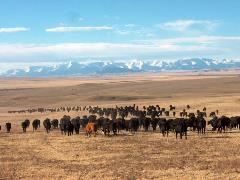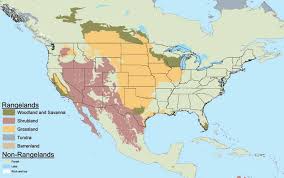What is a Rangeland?
Rangeland is all of the land in the world that is not farmland, dense forest, barren desert, or land covered by solid rock, concrete, or glaciers. Rangelands include grasslands, shrublands, savannas, and open woodlands. Almost half of the land on Earth is rangeland and one third of the United States is rangeland!
Rangelands are important for many reasons.
Raising livestock. Rangeland in the western states is home to more than half of the beef cattle and most of the sheep and goats in the country. Livestock raised on rangeland supply meat and animal products (like wool and leather) to America and the world.
Wildlife habitat. Rangelands provide a home for countless mammals, birds, amphibians, fish and insects.
Clean air and water. Rangelands are located mostly in the western United States. Since the western U.S. has a much

drier climate than the eastern U.S., water is extremely precious there. That is why it is important to pay attention to the amount and quality of water that flow off of rangeland.
Recreation. Rangelands are important for hiking, hunting, camping, mountain biking, cross-county skiing, and snowmobiling.
Mining and energy. Rangelands provide minerals for technology and industry through mining. The wind and sun in the rangelands also provide renewable energy.
Who uses rangeland?
Rangelands provide grazing lands for livestock. But that's not all. Just look at all of the animals that call rangelands home!
- Deer, elk, antelope
- Turkeys, Hawks, eagles
- Kangaroo rats
- Butterflies
- Rattlesnakes
- Bobcats, mountain lions
- Foxes, coyotes, wolves (in some states)
- Grasshoppers
Rangelands also are home to different plants, such as trees, shrubs and grasses.
Who takes care of rangelands?
Rangelands need people who care about them to make sure we can enjoy them--and the animals and plants that live on them--for many years. 
Ranching families own rangelands and have cared for the same land for many years. Some families have lived on their and for 100 years or more! Many of our rangelands also are public lands. Public lands are not owned by a family, but belong to all of us. The government cares for our public rangelands. They hire people who studied about rangelands in college to work with ranching families and the government.


